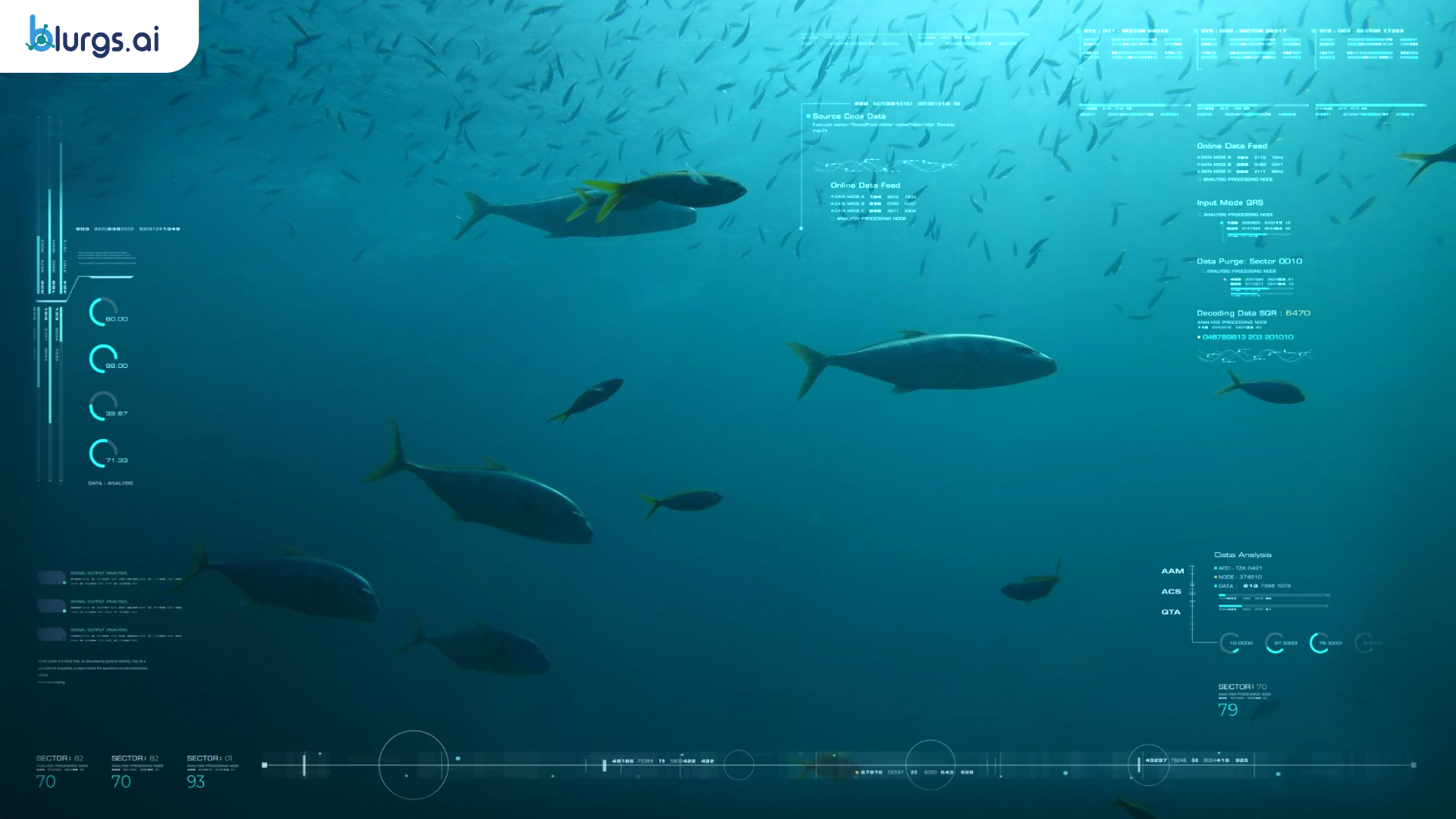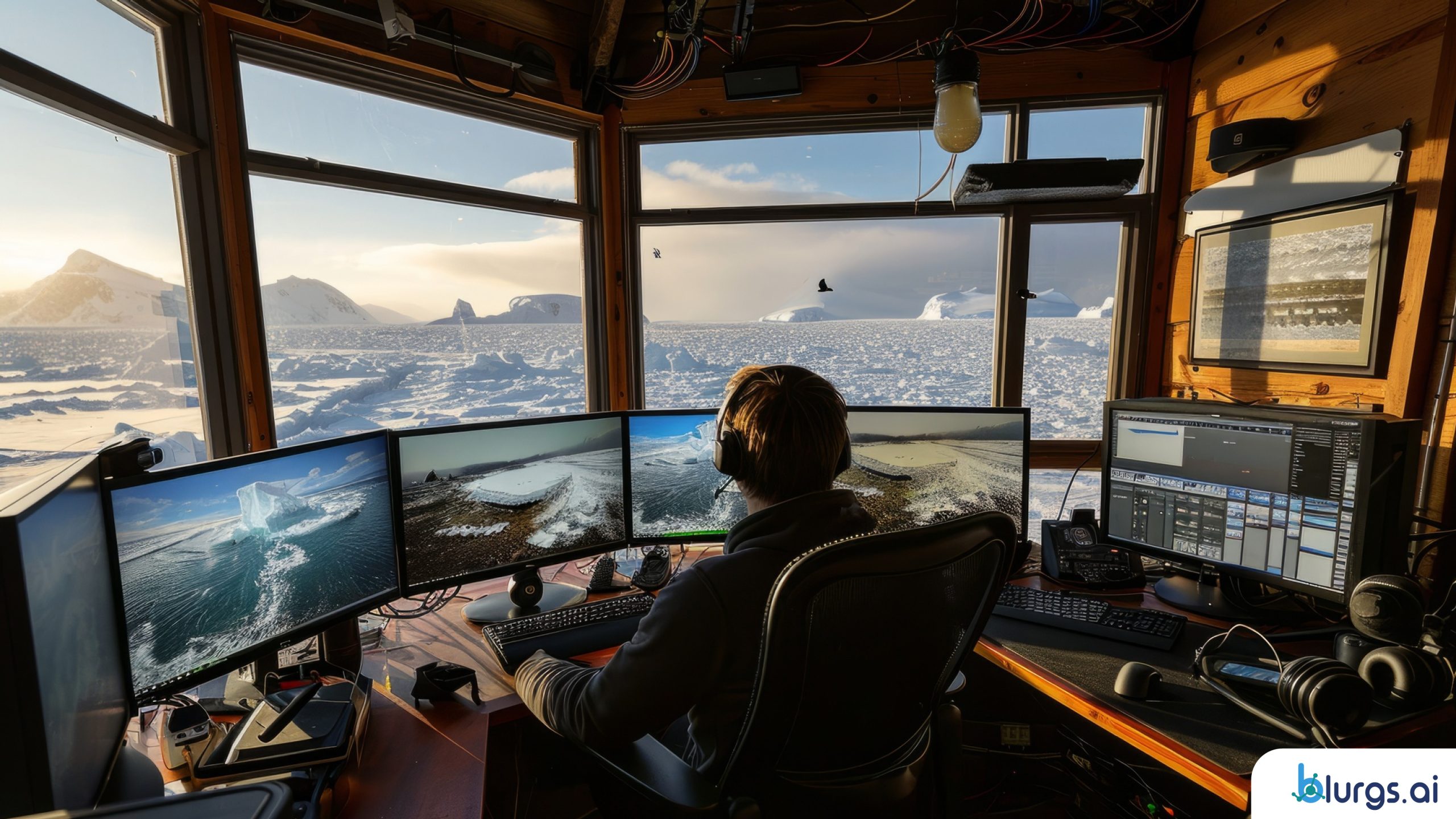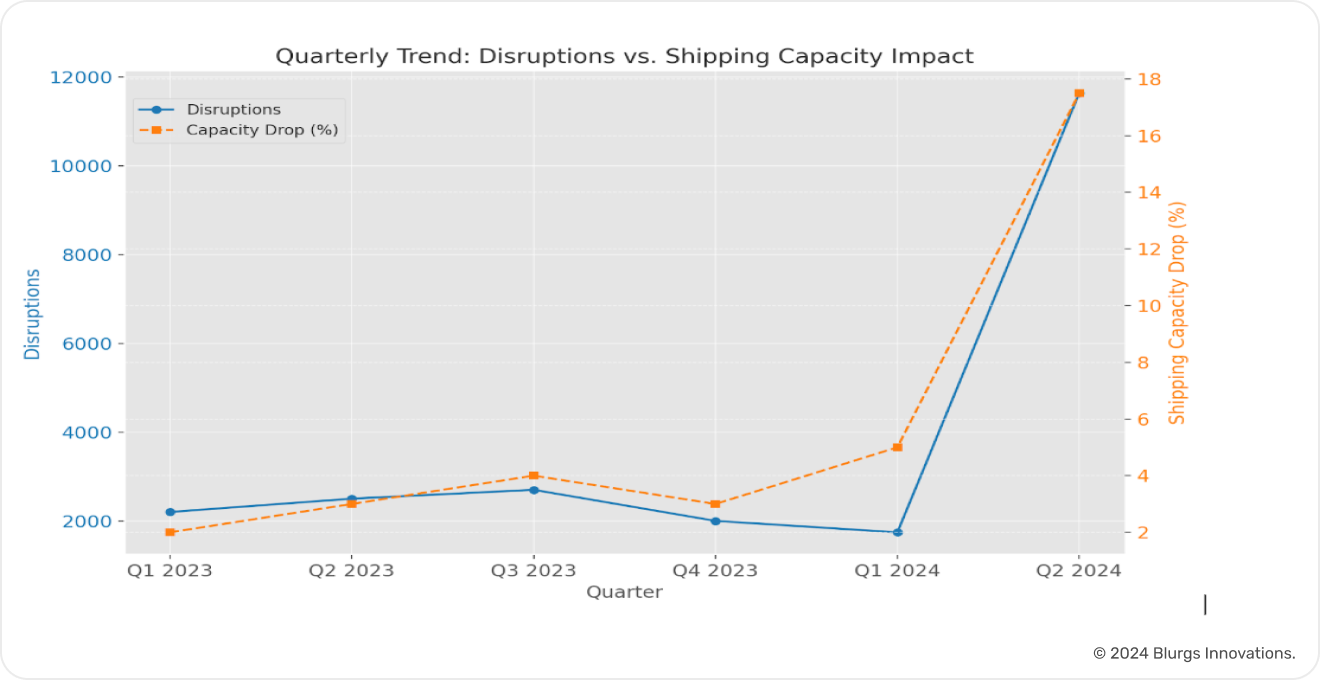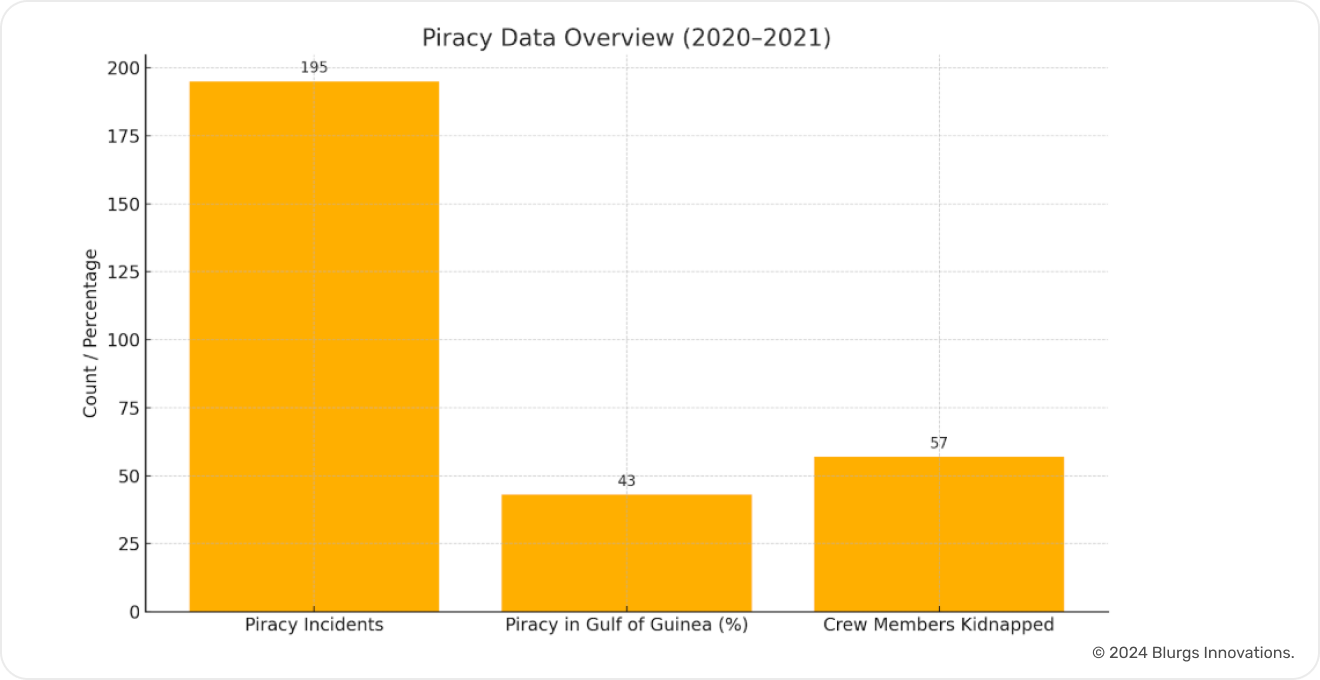3.5 trillion fish are found in the oceans.
300-500 new species of fish are discovered every year.
Great, right? That means more fish to capture.
Not quite.
In 2023, 90.6 million metric tons of fish were captured from fishing activities. To put this figure into perspective — 15% of fish globally and one-third of freshwater fish are threatened by extinction.
We could go on quoting numbers (larger species of fish have declined by 94% — just to show you we can) but the picture is clear.
Overfishing is one of the gravest threats facing our oceans today. The consequences ripple through the food chain, affecting millions of people who rely on the ocean for their livelihoods.
If this trend continues, the health of our oceans—and by extension, the planet—will be irreparably damaged. What we need right now is urgent, decisive action.
The Role of Technology in Conservation Efforts
Artificial Intelligence (AI) has emerged as a critical tool in protecting marine biodiversity. By providing real-time monitoring, precise data analysis, and actionable insights, AI enables us to enforce regulations more effectively and promote sustainable fishing practices.

Illegal, unreported, and unregulated (IUU) fishing further exacerbates the problem, undermining efforts to manage fish stocks sustainably. Studies suggest that at the current rate of overfishing the world’s oceans could be empty of fish as early as 2048.
In fact, some species are already experiencing declines of up to 90% from their historical levels.
What are the Ecological and Economic Consequences of Overfishing?

Economic Impacts of Overfishing
Loss of Livelihoods in Coastal Communities
Coastal communities, particularly in developing regions, heavily rely on fishing as their primary source of income. Overfishing depletes fish stocks, leading to reduced catches and economic hardship for these communities.
Disruption of Global Fish Markets
As fish populations dwindle, the supply of seafood declines, leading to higher prices and market instability. This disruption affects the entire supply chain, from fishermen to consumers, and can result in significant economic losses.
Decline in Long-Term Industry Viability
Overfishing threatens the sustainability of the fishing industry. If current practices continue, the industry could face severe declines in productivity, leading to job losses and the collapse of related businesses.
Impact on Global Food Security
With fish being a major source of protein for billions of people, overfishing jeopardizes food security, especially in regions where alternative protein sources are scarce. This can lead to increased malnutrition and economic strain on healthcare systems.
Ecological Impacts of Overfishing
Disruption of Marine Ecosystems
Overfishing disrupts the natural balance of marine ecosystems. The removal of key species can lead to the collapse of entire food chains, affecting a wide range of marine life.
Loss of Biodiversity
Overexploitation of fish species leads to a reduction in marine biodiversity. This loss makes ecosystems more vulnerable to environmental changes and less resilient to disturbances.
Degradation of Ocean Health
Overfishing contributes to the degradation of ocean health by removing species that play critical roles in maintaining the balance of marine environments, such as those that control algae populations or help coral reefs thrive.
Impact on Coral Reefs
Overfishing of herbivorous fish, which control algae growth, can lead to the overgrowth of algae on coral reefs. This stresses coral reefs, leading to their decline and the loss of the diverse marine life they support.
AI’s Role in Overfishing Solutions: Key Technologies at Work
| Solution | What | How |
| Satellite Imagery for Global Monitoring | Satellite imagery allows for comprehensive monitoring of global fishing activities. AI analyzes these images to detect and track vessels across vast ocean regions, identifying areas where overfishing or illegal activities might be occurring. | AI algorithms process the satellite data to recognize patterns and anomalies, such as clusters of vessels in no-fishing zones. By cross-referencing these patterns with known fishing regulations, AI helps authorities pinpoint illegal activities and deploy resources for environmental protection where needed. |
| Underwater Drones for Habitat Surveillance | Underwater drones are used to explore and monitor marine habitats, providing valuable data on fish populations and the health of underwater ecosystems. These drones can access areas that are otherwise difficult or impossible to reach. | Equipped with high-definition cameras and advanced sensors, these drones capture detailed footage and environmental data. AI then analyzes this information to assess the condition of fish stocks, detect changes in habitats, and identify signs of overfishing or environmental stress. |
| Data Analytics Platforms | AI-driven data analytics platforms aggregate and process vast amounts of information from various sources, including satellites, drones, and on-board vessel sensors. These platforms provide a comprehensive view of fishing activities and marine conditions in real time. | AI algorithms synthesize data from multiple inputs to produce actionable insights, such as identifying trends in fish population dynamics or predicting potential overfishing hotspots. It enables regulators and conservationists to make informed decisions to manage and protect marine ecosystems. |
| Predictive Analytics for Sustainable Fishing | Predictive analytics uses AI to forecast future trends in fish stocks, including their levels and migration patterns. Crucial for setting fishing quotas that prevent overfishing and promote long-term sustainability. | AI analyzes historical data, current environmental conditions, and fishing trends to predict how fish populations will change over time. These predictions inform the establishment of quotas that align with the natural reproductive cycles of fish, ensuring that fishing practices do not exceed sustainable limits. |
| Real-Time Monitoring of Fishing Zones | Real-time monitoring systems powered by AI continuously observe fishing zones to detect any unusual or illegal activities. Ensures that fishing practices are kept within legal and sustainable bounds. | AI systems use data from various sensors, including AIS (Automatic Identification System), to monitor the movement and behavior of fishing vessels. When an irregularity is detected—such as a vessel entering a protected zone—the system immediately flags the activity for further investigation and potential enforcement action. |
| Machine Learning for Vessel Identification | Machine learning algorithms help distinguish between legal and illegal fishing vessels by analyzing their behavior patterns, such as route choices or operational practices. | AI systems learn from vast datasets of vessel movements to identify suspicious activities, like a vessel turning off its AIS or making unexpected detours. Allows authorities to focus enforcement efforts on vessels that are likely engaging in illegal fishing, improving the effectiveness of surveillance and compliance measures. |
| Automated Reporting and Alerts | AI tools generate automated reports and real-time alerts when suspicious fishing activities are detected. Automation ensures that potential issues are addressed swiftly and effectively. | When AI systems identify a potential violation, they automatically compile the relevant data—such as location, vessel ID, and nature of the activity—into a report. They also trigger immediate alerts to regulatory bodies, enabling them to take prompt action and mitigate the impact of illegal fishing on marine ecosystems. |
Featuring Innovative AI Use Cases in Sustainable Fishing Practices
Use Case 1: Global Fishing Watch
Overview: Global Fishing Watch leverages satellite data and AI to bring unprecedented transparency to global fishing activities. By monitoring fishing vessels worldwide, it provides an open-access platform where anyone can track fishing operations in real time.
Highlight: The platform’s AI-driven analytics are crucial for identifying illegal fishing activities. By tracking vessels that turn off their AIS to evade detection, Global Fishing Watch promotes sustainable fishing practices and helps authorities enforce regulations more effectively.
Use Case 2: Pelagic Data Systems
Overview: Pelagic Data Systems offers affordable tracking devices designed specifically for small-scale fisheries. These devices collect vital data on fishing activities, even in remote locations, where traditional monitoring methods are challenging.
Highlight: AI provides actionable insights that help manage fish stocks sustainably. By enabling small-scale fishers to contribute to data collection, Pelagic Data Systems ensures that management decisions are informed by accurate, on-the-ground information.
Use Case 3: Saildrone
Overview: Saildrone deploys AI-powered autonomous drones to monitor ocean health and track fish populations. These drones can operate continuously, collecting high-resolution data on marine conditions and species distribution.
Highlight: The data gathered by Saildrone’s AI systems significantly contributes to oceanographic research and sustainable fisheries management. By providing real-time insights into the health of marine ecosystems, Saildrone mitigates overfishing and protects ocean health.
Use Case 4: The Nature Conservancy’s FishFace Project
Overview: The FishFace Project by The Nature Conservancy uses AI and facial recognition technology to identify and classify fish species as they are caught. This innovation supports accurate species tracking and ensures that fishing activities remain within legal and sustainable limits.
Highlight: By automating the identification process, FishFace ensures compliance with fishing regulations and prevents overfishing. The AI system helps maintain biodiversity by ensuring that specific species are harvested, protecting vulnerable populations from overexploitation.
When We Say Every Action Counts, It Does
Download our eBook today to know more about how you can improve maritime security with AI solutions. Get your copy here
It’s time for stakeholders—governments, NGOs, and the fishing industry—to use modern solutions for sustainable fishing.



